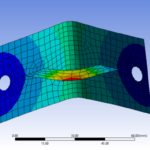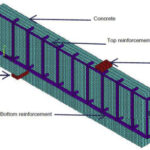The quick answer: YES! In nearly all cases after attending the class, the students fully appreciate the value of the three or four days spent learning the pros and cons of simulation and getting hands-on instruction on how to use the software.
However, since someone new to FEA or CFD software may never have been exposed to training, it is much tougher to make the decision to enroll without knowing they will definitely benefit. Let me address some of the most common questions we get from those considering formal training.
With all the information at your finger tips on the web, why should I sit through a formal class?
While there is no question the information available on the web is extensive, it can also be overwhelming. It’s often difficult to know where to even begin. Whereas, in formal training, you have the benefit of an instructor to walk you through the procedures of analysis one step at a time, while including a detailed explanation of why each step is important and how to avoid common pitfalls. An analogy might be: I could climb that mountain through the brush, but it would take me a lot less time and be a lot more fun if I could walk with a trained guide who would get me there safely and show me the beautiful vistas along the way!
When I complete the class, will I be an expert?
Just like in most things in life, when performing analysis there is no substitute for experience. The expectation of being an analysis expert in 4 days is unrealistic. One training class cannot replicate years of solving complex analyses. However, training classes often provide the ability to “pick the brain” of an expert. At a CAE Associates training class, the instructor can offer advice on a student’s specific application and, as necessary, leverage the insights from everyone in our organization. An example might be in the area of modeling composite structures. While I have done some work in the past and can address general questions, the student is better served by speaking with George Bauer, who has 15 years of experience analyzing composite components of helicopters.
What are the differences between classroom and web based training?
We see a lot of value in both online and in-person training, but the teaching styles must be different. For classroom training, a full-day mixture of lecture, demo and hands-on workshops with instructor guidance works well. Students can benefit from hearing anecdotes from instructors who, at CAE Associates, are also working FEA and CFD consulting engineers. For example, how we analyzed the thermal structural collapse of the World Trade Center. A very powerful part of attending classes in person is the interaction with other engineers in the classes, and being face to face with the instructor, so that you can visually connect and acknowledge understanding.
When considering online classes, we recommend concentrating on an advanced topic that can be covered in a couple hours. We find 2 hours the ideal length in terms of attention span without face-to-face interaction. The online lecture/demo format is followed up by a two hour “open-house” a couple days later where screens and mouse control can be shared by the students to get feedback and hands-on help on the exercises or their specific application.
I don’t care about modeling a cantilever beam, I need to get training on analyzing progressive collapse. Will this be covered in the training class?
When learning anything new, there is always going to be a learning curve. While we encourage students to ask detailed questions about their problems, there is a balance of being able to solve the basic problems before jumping into complex analyses. It is much easier to check the solution of a text book problem than to validate the collapse sequence of an entire building. The old saying goes, “you have to walk before you can run”, and the same logic applies when getting started with simulation. In time, you will be able to work with more complex problems, but an understanding the basics is imperative for success. Complex, specific analyses are perfect candidates for a one-on-one mentoring session, which I will discuss in detail in a future post.
Nevertheless, in keeping with one of my promises of addressing all in-class questions:
I would address the progressive collapse question by demonstrating the procedures of performing an eigenvalue buckling analysis of a single column, followed by a nonlinear buckling analysis where the initial geometry would be adjusted to the eigenvector buckled shape, providing an initial imperfection as an initial condition. A simple calculation that provides the basis for the student to expand to their real-life problem.


